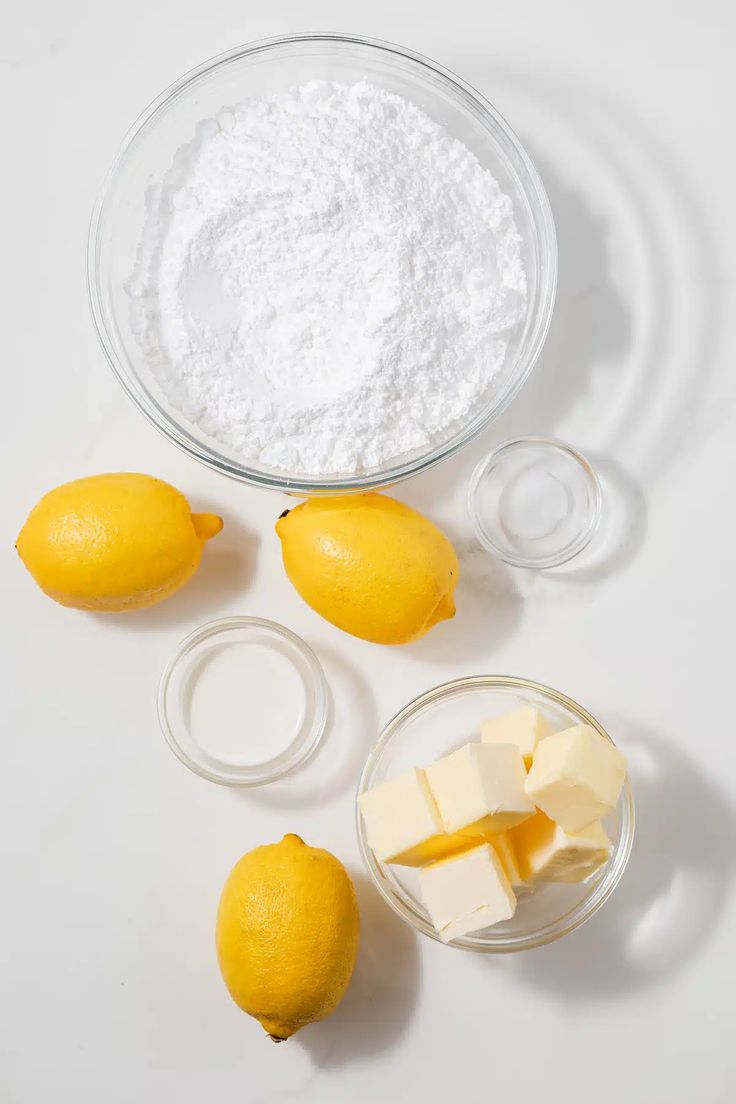
Lemon cake is a bright, zesty dessert that brings together the refreshing tang of fresh lemons with the sweetness of soft, buttery cake. Perfectly moist and tender, it’s often topped with a simple lemon glaze or creamy frosting to enhance its citrus flavor.
This beloved treat can range from a classic loaf to layered showstoppers, making it versatile for any occasion—whether it’s a spring brunch, afternoon tea, or summer celebration.
With its balance of tart and sweet, lemon cake offers a refreshing alternative to richer desserts, delighting both casual bakers and citrus lovers alike with every sunny slice.
There’s something irresistibly refreshing about a well-made lemon cake — light, fluffy, and bursting with bright citrus flavor. Whether you’re baking for a spring celebration, a summer picnic, or just need a comforting slice with tea, this classic lemon cake delivers.
The recipe is straightforward and results in a soft, tender crumb with the perfect balance of tart and sweet.
A Lemon Cake to Die For!
Description
Lemon cake is a bright, zesty dessert known for its light texture and refreshing citrus flavor.
Made with fresh lemon juice and zest, it balances sweet and tart in every bite. Often topped with a lemon glaze or cream cheese frosting, it’s perfect for spring and summer gatherings, afternoon tea, or festive occasions.
The moist crumb and vibrant aroma make it a crowd-pleaser, whether served as a loaf, layered cake, or cupcakes.
This classic treat offers a delightful burst of sunshine on the palate, making it both comforting and uplifting.
Ingredients
For the Lemon Syrup:
For the Lemon Glaze (optional but recommended):
Instructions
-
Step 1: Prep the Oven and Pans
Preheat your oven to 350°F (175°C). Grease and flour two 8-inch round cake pans (or one 9x13-inch pan). Line the bottoms with parchment paper for easy removal. -
Step 2: Mix the Dry Ingredients
In a medium bowl, whisk together the flour, baking powder, baking soda, and salt. Set aside. -
Step 3: Cream the Butter and Sugar
In a large mixing bowl, beat the butter and sugar together with a hand or stand mixer on medium-high speed for about 3–5 minutes until pale, light, and fluffy.
This step incorporates air into the batter, which helps the cake rise beautifully.
-
Step 4: Add the Eggs and Flavorings
Beat in the eggs one at a time, mixing well after each addition. Add the lemon zest, lemon juice, and vanilla extract.
The mixture might look slightly curdled — this is normal due to the acid in the lemon juice and doesn’t affect the final texture.
-
Step 5: Alternate Adding Dry Ingredients and Buttermilk
Reduce the mixer speed to low. Add the dry ingredients in three parts, alternating with the buttermilk, starting and ending with the dry. Mix until just combined — avoid overmixing to keep the cake tender. -
Step 6: Bake
Divide the batter evenly between the prepared pans and smooth the tops. Bake for 25–30 minutes for round pans (35–40 minutes for a 9x13-inch) or until a toothpick inserted into the center comes out clean.
The tops should be lightly golden and spring back when touched.
-
Step 7: Lemon Syrup Soak (Optional but Adds Moisture)
While the cakes are baking, prepare the lemon syrup. In a small saucepan, heat the lemon juice and sugar over low heat until the sugar dissolves. Set aside.
Once the cakes are done baking and still warm, use a toothpick or skewer to poke small holes over the top and brush the syrup over the cakes. This adds a burst of citrus flavor and keeps the cake moist.
-
Step 8: Cool and Glaze
Let the cakes cool in their pans for 10 minutes, then remove and transfer to wire racks to cool completely. For the glaze, whisk the powdered sugar and lemon juice until smooth.
Adjust consistency with more sugar or juice as needed. Once the cakes are completely cool, drizzle the glaze over the top, letting it drip down the sides for a beautiful finish. Garnish with lemon zest for extra aroma and color.
Nutrition Facts
Servings 10
- Amount Per Serving
- Calories 420kcal
- % Daily Value *
- Total Fat 20g31%
- Saturated Fat 10g50%
- Cholesterol 80mg27%
- Sodium 300mg13%
- Total Carbohydrate 60g20%
- Dietary Fiber 1g4%
- Sugars 45g
- Protein 5g10%
* Percent Daily Values are based on a 2,000 calorie diet. Your daily value may be higher or lower depending on your calorie needs.
Note
Lemon Cake Tips, Serving Tricks, Storage & Conclusion
Lemon Cake Baking Tips
- Use Fresh Lemons:
Always opt for fresh lemon juice and zest. Bottled juice lacks the bright, zesty oils that real lemons provide. Zesting the lemon before juicing maximizes the flavor. - Room Temperature Ingredients:
Ensure eggs, butter, and dairy (like buttermilk or sour cream) are at room temperature. This helps them emulsify smoothly into the batter, resulting in a more even, tender crumb. - Don’t Overmix:
Once the flour is added, mix until just combined. Overmixing can lead to a dense, tough cake rather than a soft, fluffy texture. - Measure Accurately:
Too much flour is a common baking mistake. Use a kitchen scale if possible, or spoon flour into your measuring cup and level it off. - Balance Sweet and Tart:
Lemon cake is all about balance. If the lemon flavor is too sharp, a bit of extra sugar or a cream cheese frosting can mellow it. If it's too sweet, an extra tablespoon of zest can restore balance. - Add Poppy Seeds or Blueberries:
For a twist, try folding in poppy seeds or fresh blueberries to complement the citrusy notes. - Moisture is Key:
To keep the cake moist, use ingredients like yogurt, sour cream, or buttermilk. You can also brush the cake with a lemon syrup (a simple mix of lemon juice and sugar) while it’s still warm.
Serving Tricks for a Beautiful Presentation
- Glaze it Generously:
A simple lemon glaze (powdered sugar + lemon juice) drizzled over a cooled cake adds moisture, shine, and zing. For a thicker topping, use a lemon cream cheese frosting. - Use Garnishes:
Decorate with fresh lemon slices, zest curls, mint leaves, or edible flowers. A dusting of powdered sugar can also give it a light, elegant finish. - Pair with Tea or Berries:
Serve your lemon cake with a side of mixed berries, whipped cream, or a scoop of vanilla ice cream. It also pairs wonderfully with hot Earl Grey or green tea. - Layer It Up:
For special occasions, slice your cake horizontally and fill it with lemon curd or mascarpone for a layered masterpiece. - Serve at Room Temperature:
For the best flavor and texture, let the cake come to room temperature before serving. This enhances the citrus aroma and softens the crumb.
Storage Tips
- Short-Term (Up to 3 Days):
Store covered at room temperature in a cool, dry place. Use a cake dome or wrap it loosely in foil or plastic wrap to prevent it from drying out. - Refrigeration (Up to 1 Week):
If the cake contains cream cheese frosting or dairy-based fillings, keep it in the fridge. Wrap tightly in plastic wrap or store in an airtight container. Let it come to room temperature before serving. - Freezing (Up to 3 Months):
Wrap slices or the whole cake tightly in plastic wrap and then foil. Label and freeze. Thaw in the refrigerator overnight or at room temperature for a few hours. - Avoid Moisture Loss:
Glazed or frosted cakes are better protected from drying out. If you’re freezing a naked cake, consider brushing it with syrup first for added protection.
Serving Suggestions
This lemon cake pairs wonderfully with a cup of Earl Grey tea or fresh berries. It’s excellent served plain, but can also be dressed up with whipped cream, lemon curd, or even a layer of raspberry jam for a fruity twist. If you’re baking for a birthday or brunch, this cake stands up beautifully as a centerpiece.
Tips for Success
- Use Fresh Lemons: Fresh lemon juice and zest are key to the bright, natural flavor of the cake. Avoid bottled juice for best results.
- Room Temperature Ingredients: Ensure eggs, buttermilk, and butter are at room temperature. This helps create a smoother batter and even bake.
- Don’t Overmix: Once the dry ingredients are added, mix just until incorporated. Overmixing can lead to a tough cake.
- Poke and Soak: The lemon syrup isn’t mandatory, but it elevates the texture and flavor. Don’t skip it if you want that juicy zing in every bite.
- Storage: Store covered at room temperature for up to 2 days or refrigerate for up to 5 days. The cake also freezes well (unglazed) for up to 2 months.
Seasonal Note
This cake is particularly perfect for spring and summer thanks to its refreshing citrus flavor, but it’s welcome any time of year when you need a little brightness on your plate. Its versatility makes it a go-to for Easter, Mother's Day, summer potlucks, or simply as an afternoon treat.
Conclusion
Lemon cake is a delightful balance of sweet and tart that suits nearly every occasion—from casual tea time to elegant celebrations. With a few thoughtful techniques—like using fresh lemons, measuring accurately, and not overbaking—you can achieve a moist, fluffy cake that bursts with citrus flavor. Enhancing your presentation with glazes, garnishes, and complementary sides elevates the experience even further.
Storage doesn’t need to be complicated; proper wrapping and refrigeration or freezing can extend the life of your cake while preserving its taste and texture. Whether enjoyed plain or dressed up, lemon cake’s versatility and bright, sunny flavor make it a perennial favorite in the baking world.
Frequently Asked Questions
What makes a lemon cake taste so lemony?
Lemon cake gets its bright flavor from fresh lemon juice and lemon zest. Zest, which is the outer yellow part of the lemon peel, contains essential oils that offer intense citrus aroma and taste. Some recipes also include lemon extract for a stronger punch without extra acidity.
Can I use bottled lemon juice instead of fresh lemons?
While bottled lemon juice works in a pinch, fresh lemon juice is strongly recommended. Bottled juice lacks the vibrant, tangy notes and may taste flat or slightly bitter. Fresh juice combined with zest creates a well-rounded lemon flavor that defines a great lemon cake.
How do I keep lemon cake moist?
Moisture can be maintained by using ingredients like yogurt, buttermilk, sour cream, or oil in the batter. Additionally, brushing the cake with a simple lemon syrup after baking adds extra moisture and flavor. Avoid overbaking, which can dry the cake out.
Can lemon cake be made ahead of time?
Yes, lemon cake stores well and even improves in flavor after a day. You can bake the cake a day ahead and store it at room temperature wrapped tightly, or refrigerate it for up to 3 days. Lemon cakes also freeze beautifully—wrap in plastic and foil and freeze for up to 2 months.








